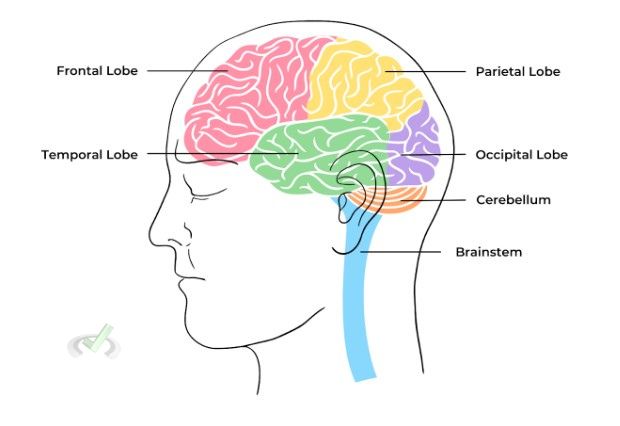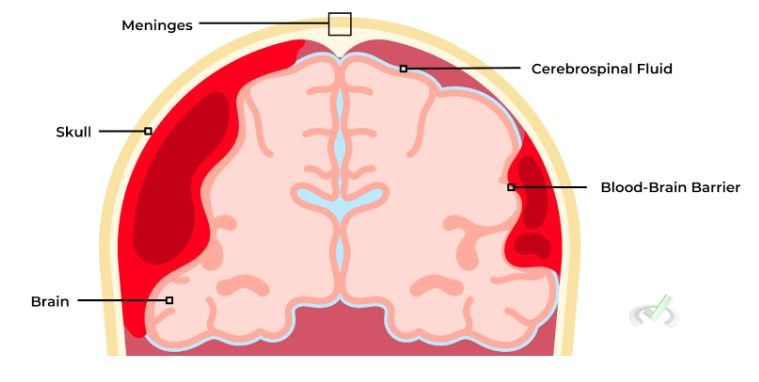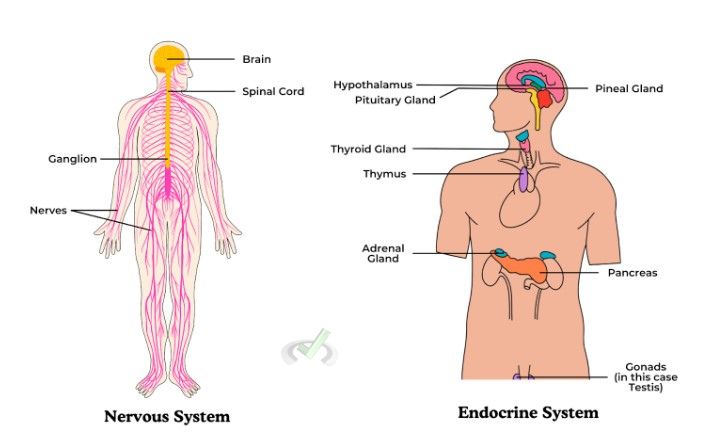Imagine you are reading a book, and your mind starts to wander. Suddenly, you remember you have an assignment due tomorrow.
This shift in focus and memory recall happens because the different parts of your brain work together.
The brain is the body's main control center. It has several parts that handle different jobs.

These parts include the cerebrum, cerebellum, and brainstem. Understanding these regions helps us know how our brain processes information and controls our body. Let's explore the major regions and lobes of the brain to know how they control various functions.
I. Cerebrum
The cerebrum is the biggest part of your brain. It is divided into two halves (left and right). It is further divided into four lobes:
A. Frontal Lobe
- Function: Controls thinking, planning, problem-solving, decision-making, and voluntary movement.
- Location: At the front of the brain.
- Importance: It helps with speech and emotions. This area includes Broca’s area, which helps produce language. For example, moving your hand involves the frontal lobe when planning a task.
B. Parietal Lobe
- Function: Processes sensory information like touch, temperature, and pain.
- Location: Behind the frontal lobe.
- Importance: It helps you understand where your body is in space and how to move it. For instance, it enables you to recognize the position of your hand even when you are not looking at it. This lobe is essential for reading maps or tasks that need hand-eye coordination.
C. Temporal Lobe
- Function: Involved in hearing, memory, and understanding language.
- Location: Beneath the parietal lobe.
- Importance: This lobe includes the hippocampus. It is essential for making memories. Then, the Wernicke’s area is important for understanding language. Damage to this area can lead to trouble forming new memories or understanding spoken language.
D. Occipital Lobe
- Function: Responsible for processing visual information.
- Location: At the back of the brain.
- Importance: This lobe helps you understand what you see, including color, light, and movement. For example, recognizing faces and objects involves the occipital lobe.
II. Cerebellum
The cerebellum is located just under the cerebrum at the back of your brain.
- Function: Coordinates voluntary movements, balance, and posture.
- Importance: It ensures smooth and precise movements, helping you keep your balance and move correctly. Activities like riding a bike or playing a musical instrument require the cerebellum.
III. Brainstem
The brainstem is the structure that connects the brain to the spinal cord. It controls automatic functions necessary for survival.
A. Parts:
- Midbrain: Controls eye movements and processes visual and sound information.
- Pons: Relays signals between the cerebrum and the cerebellum. It also plays a role in sleep and breathing.
- Medulla Oblongata: Regulates vital functions like heartbeat, breathing, and blood pressure.
IV. Protective Structures

Several structures protect the brain to keep it safe from injury.
- Skull: The hard bone that encases the brain.
- Meninges: Three membranes (dura mater, arachnoid mater, pia mater) covering the brain and spinal cord.
- Cerebrospinal Fluid (CSF): A clear fluid that acts as a cushion to the brain, removes waste, and provides nutrients.
- Blood-Brain Barrier: A barrier that prevents harmful substances in the blood from entering the brain.
V. Bridge Section
The brain does not work alone. It interacts with other systems in the body to keep you healthy, and understanding these interactions is important.
A. Nervous and Endocrine Systems

The brain works closely with the endocrine system to keep balance in the body. The hypothalamus, a part of the brain, controls the pituitary gland. The pituitary gland then controls various hormones in the body.
This interaction is important for processes like growth, metabolism, and stress response. For example, the release of cortisol in response to stress is controlled by this interaction. This is important for understanding how the body handles stress.
B. Nervous System and Mental Health
Problems with neurotransmitters are often linked to psychological disorders. For example, low levels of serotonin are directly linked with depression. Dopamine problems are related to schizophrenia and Parkinson's disease.
Understanding these connections highlights the importance of neurobiology in mental health. Medications such as SSRIs (Selective Serotonin Reuptake Inhibitors) for depression work by changing neurotransmitter levels.
C. Nervous and Cardiovascular Systems
The autonomic nervous system controls your heart and blood vessels. The sympathetic nervous system increases your heart rate and blood pressure during stress.
On the other hand, the parasympathetic nervous system helps lower heart rates during relaxation. This interaction is vital for keeping the heart healthy. For instance, understanding how exercise affects heart rate involves this system.
VI. Wrap-Up and Key Terms
Let's summarize what we covered in this article!
A. Major Regions of the Brain
- Cerebrum: Includes the frontal, parietal, temporal, and occipital lobes. Responsible for higher brain functions.
- Cerebellum: Coordinates voluntary movements, balance, and posture.
- Brainstem: Controls automatic functions necessary for survival.
B. Protective Structures
- Skull: Protects the brain.
- Meninges: Three layers of membranes that cover the brain and spinal cord.
- Cerebrospinal Fluid (CSF): Cushions the brain, removes waste, and provides nutrients.
- Blood-Brain Barrier: Prevents harmful substances from entering your brain.
C. Interactions with Other Systems
- Endocrine System: Maintains balance in the body through hormonal control.
- Mental Health: Neurotransmitter problems linked to psychological disorders.
- Cardiovascular System: The autonomic nervous system controls heart rate and blood pressure.
VII. Practice Questions
Sample Practice Question 1
Complete the following statement: The lobe of the brain that processes visual information is the __________.
A. Frontal Lobe
B. Parietal Lobe
C. Temporal Lobe
D. Occipital Lobe
Ans. D
The occipital lobe processes visual information.
Sample Practice Question 2
Which part of the brain connects the left and right halves?
A. Cerebral Cortex
B. Corpus Callosum
C. Thalamus
D. Cerebellum
Ans. B
The corpus callosum is a thick nerve fiber band that connects the cerebrum's left and right halves.







 To help you achieve your goal MCAT score, we take turns hosting these
To help you achieve your goal MCAT score, we take turns hosting these 





















 reviews on TrustPilot
reviews on TrustPilot